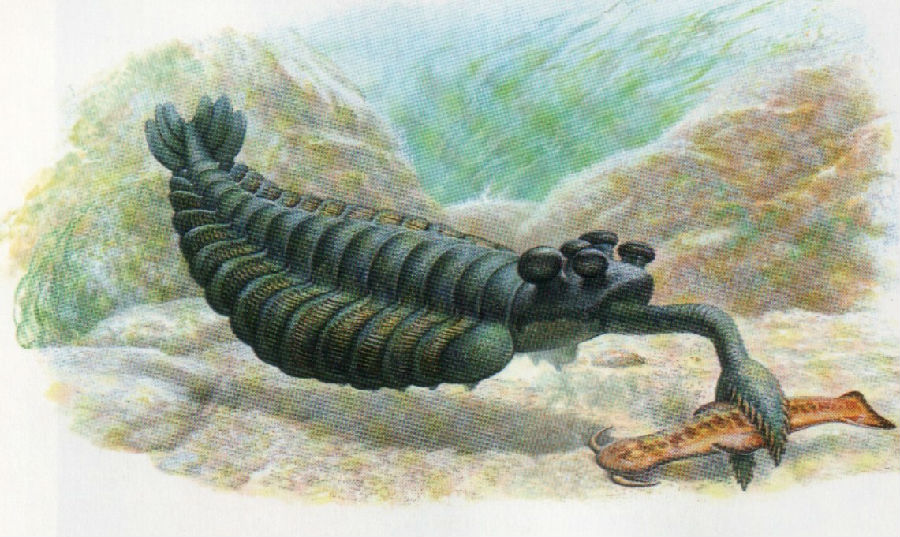With his supervisor, Harry Whittington, and fellow graduate student Derek Briggs, Conway Morris spent the next several years making a systematic revision of the entire collection, and cranking out one exciting monograph after another as discovery piled upon discovery. Many of the creatures employed body plans that were not simply unlike anything seen before or since, but were bizarrely different. One, Opabinia, had five eyes and a nozzle-like snout with claws on the end. Another, a disc-shaped being called Peytoia, looked almost comically like a pineapple slice. A third had evidently tottered about on rows of stilt-like legs, and was so odd that they named it Hallucigenia. There was so much unrecognized novelty in the collection that at one point upon opening a new drawer Conway Morris famously was heard to mutter, "Oh fuck, not another phylum."

The English team's revisions showed that the Cambrian had been a time of unparalleled innovation and experimentation in body designs. For almost four billion years life had dawdled along without any detectable ambitions in the direction of complexity, and then suddenly, in the space of just five or ten million years, it had created all the basic body designs still in use today. Name a creature, from a nematode worm to Cameron Diaz, and they all use architecture first created in the Cambrian party.












